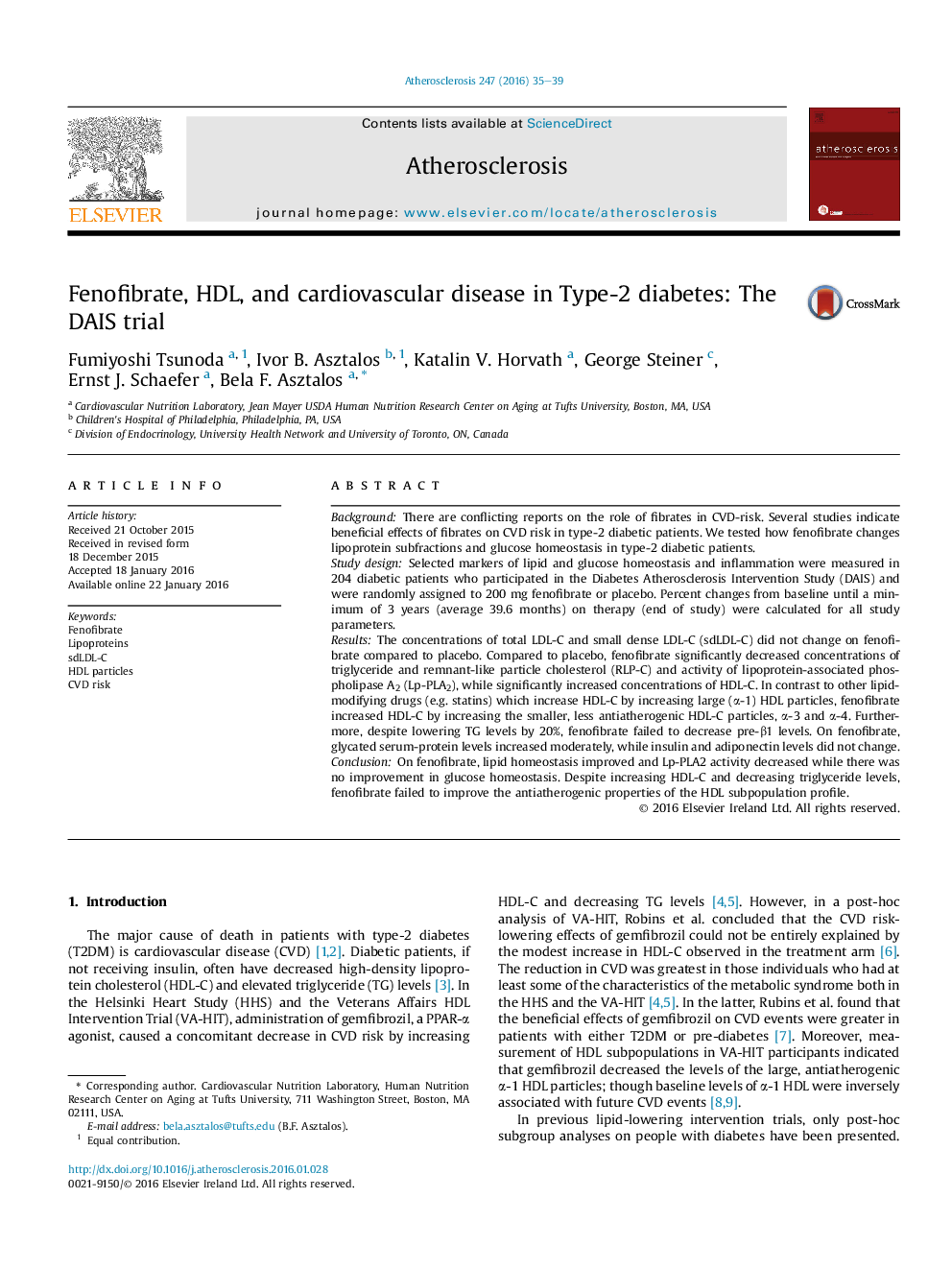| Article ID | Journal | Published Year | Pages | File Type |
|---|---|---|---|---|
| 5943336 | Atherosclerosis | 2016 | 5 Pages |
â¢Compared to placebo, fenofibrate significantly decreased TG, but not LDL-C.â¢Compared to placebo, fenofibrate significantly increased HDL-C, but not apoA-I.â¢Despite of decreasing TG and increasing HDL-C, there was no beneficial change in the HDL profile.â¢Fenofibrate's effect was more pronounced on the small HDL particles than on the large ones.
BackgroundThere are conflicting reports on the role of fibrates in CVD-risk. Several studies indicate beneficial effects of fibrates on CVD risk in type-2 diabetic patients. We tested how fenofibrate changes lipoprotein subfractions and glucose homeostasis in type-2 diabetic patients.Study designSelected markers of lipid and glucose homeostasis and inflammation were measured in 204 diabetic patients who participated in the Diabetes Atherosclerosis Intervention Study (DAIS) and were randomly assigned to 200 mg fenofibrate or placebo. Percent changes from baseline until a minimum of 3 years (average 39.6 months) on therapy (end of study) were calculated for all study parameters.ResultsThe concentrations of total LDL-C and small dense LDL-C (sdLDL-C) did not change on fenofibrate compared to placebo. Compared to placebo, fenofibrate significantly decreased concentrations of triglyceride and remnant-like particle cholesterol (RLP-C) and activity of lipoprotein-associated phospholipase A2 (Lp-PLA2), while significantly increased concentrations of HDL-C. In contrast to other lipid-modifying drugs (e.g. statins) which increase HDL-C by increasing large (α-1) HDL particles, fenofibrate increased HDL-C by increasing the smaller, less antiatherogenic HDL-C particles, α-3 and α-4. Furthermore, despite lowering TG levels by 20%, fenofibrate failed to decrease pre-β1 levels. On fenofibrate, glycated serum-protein levels increased moderately, while insulin and adiponectin levels did not change.ConclusionOn fenofibrate, lipid homeostasis improved and Lp-PLA2 activity decreased while there was no improvement in glucose homeostasis. Despite increasing HDL-C and decreasing triglyceride levels, fenofibrate failed to improve the antiatherogenic properties of the HDL subpopulation profile.
